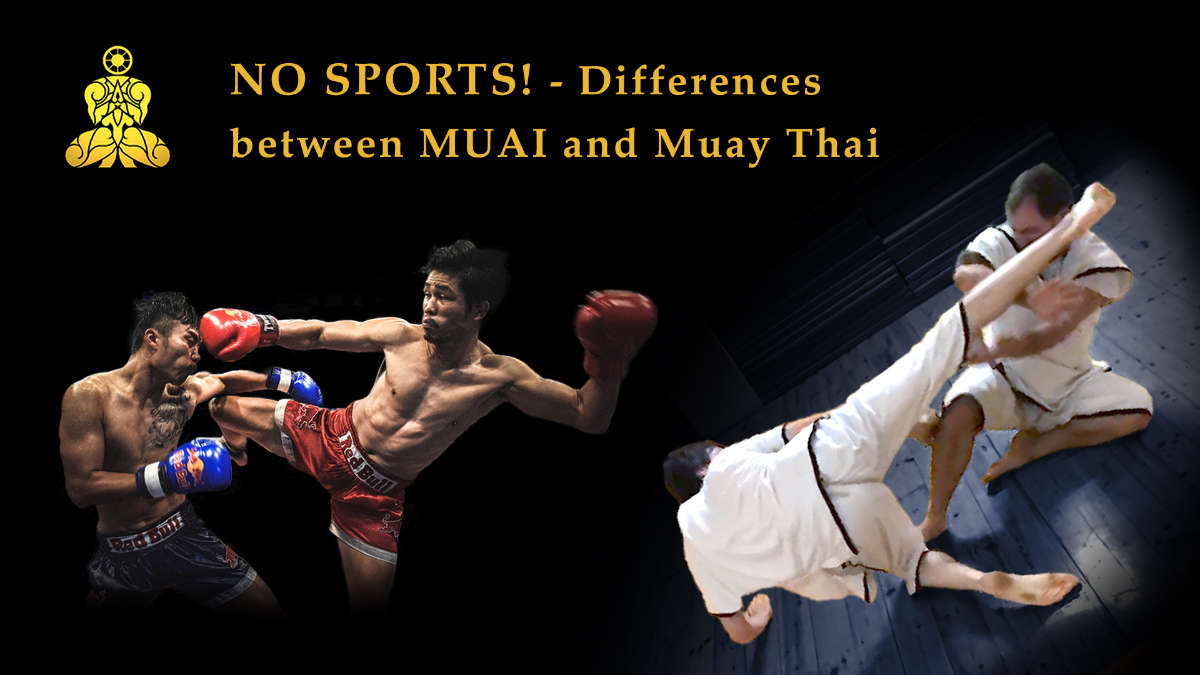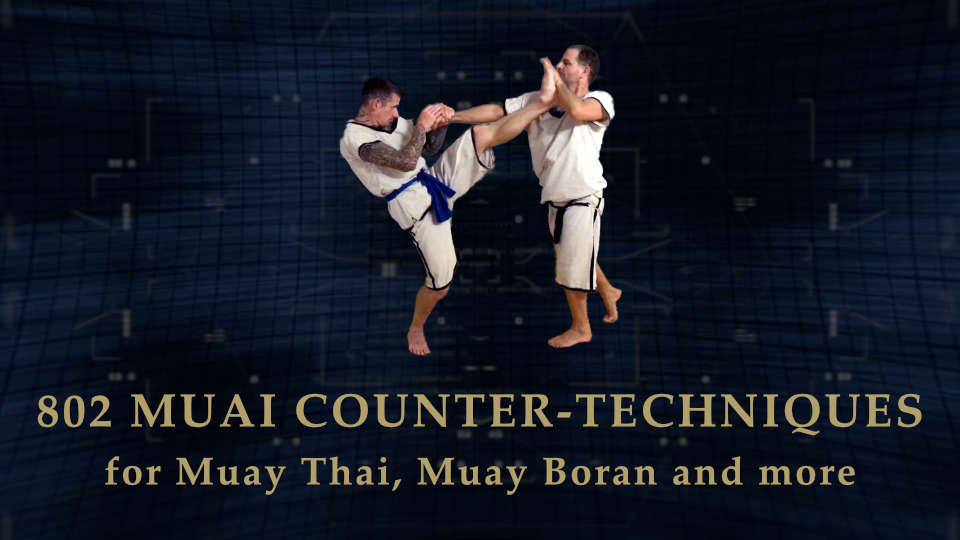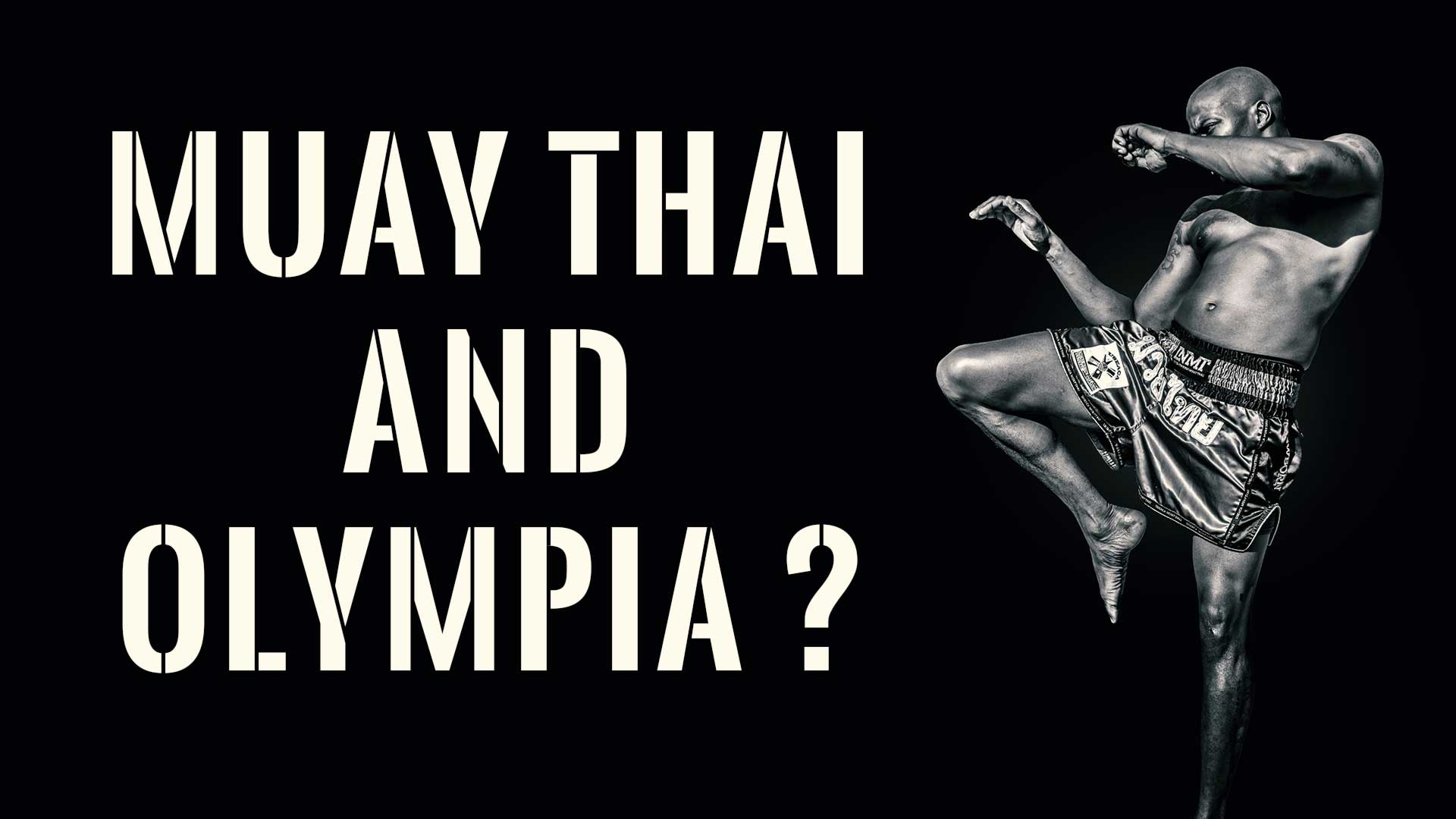What is a trick technique (Gon Muai)?
Trick techniques (Gon Muai) were more or less spectacular combinations of techniques and counter-techniques (May Gon) of the Muai, which were passed on in lyrical form.
Content
Historical use of Gon Muai
In earlier times, techniques and combinations of techniques were partly laid down in lyrical form and given imaginative names. The background was on the one hand the desire to preserve these techniques even without palm leaf manuscripts or modern media, on the other hand, the coding of the fighting techniques should also prevent possible abuse.
These lyrical paraphrases were particularly prevalent in Muai competitions, as in earlier times there was less betting on the final outcome of a fight, but on or against the successful implementation of certain techniques. The interesting question for the bettors at that time was whether a fighter could use his special technique or a certain combination of techniques. The use of such techniques was carried out on demand and the fighters received success bonuses from the bettors.
Many of these lyrically hedged Gon techniques have recently been linked to the Tiger King (Pra Chao Sua). However, there is no evidence of this. The lyrical coding of techniques gained international fame through the feature-film ONG BAK with Tony Jaa in the leading role. Pahuyuth School was involved in the German translation of these techniques.
Gon Muai Techniques in Pahuyuth
In Pahuyuth or MUAI, lyrical mediation is no longer common. On the one hand, because, from a historical point of view, it cannot really be classified as “traditional” (techniques relating to the Rammakiern Saga, for example, are less than 200 years old), because they have little to no practical connection (complex combinations of techniques require suitable situations) and because they repeatedly lead to misunderstandings in the practical teaching process.
This form of tradition was replaced by more modern and contemporary media and the systematic nomenclature of Pahuyuth, as found in the Lugsidt techniques and the Pahuyuth Compendium. Another reason for the abolition of this form of mediation is that this method can lead to an excessive determination of and fixation on technical combinations among learners. However, this is contrary to the real applicability in dangerous situations and contradicts the idea of freedom and individuality of the Pahuyuth.
In the mid-2000s, the Gon Muai techniques were removed from the Pahuyuth curriculum.
Decoding of traditional combinations
The key to decoding lyrically handed down combinations of techniques is always the text and its historical or cultural context. An example of a possible decoding of the text line “Hanuman Tawai Waen” (Hanuman passes the ring) might look like this:
- Hanuman: Monkey god from the Rammakiern Saga. Considered powerful and mighty, but also tricky and playful.
- hands over/presents: This formulation indicates a humble attitude, a soft movement, a dodging or a ducked posture. This, in turn, could indicate a “dodging” from an enemy attack.
- the ring: A ring is round, which can indicate a round movement or a curved punch. In addition, the character Hanuman in the Rammakiern Sage wears an annular headband that presses on his forehead or temples for the purpose of punishment. From this it can be concluded that a curved fist to the head in connection with an evasive movement could be meant. However, a single hook to the temple only results in half a ring, which is why two counter-rotating blows would be conceivable in this case. Punching with both fists at the same time, however, does not result in a particularly powerful (see Hanuman properties above) technique and also leads to gaps in guard. As a result, two consecutive blows could be meant as a left-right or right-left combination in the opposite direction. The optimal elbow angle for powerful curves is about 90°. Combined with the dodging from the enemy attack, this speaks to a very close-running technique that involves a forward step.
It follows: A possible interpretation of “Hanuman Tawai Waen” is an offensive-evasion of an enemy attack with a step forward, accompanied by two consecutive, counter-rotating cornering techniques to the head.
Examples of traditional combinations
- Jawa Throws a Spear – Chawa Sad Hok
- Chorake Fad Hang – Serpent Twists Ist Tail
- Dap Chawala – Extinguish the Lamps
- Hak Kor Erawan – Break the Elephant’s Nek
- Hak Nguuang Aiyara – Break the Elephant’s Tusks
- Inao Tang Grid – Inao Stabs with His Kris
- Khun Yak Chb Ling – The Giant Catches the Monkey
- Mon Yan Lak – Mon Supports a Pillar
- Naka Bid Hang – Serpent Twists is Tail
- Pak Look Toy – Impaling the Stake
- Paksa Waeg Rang – Bird Peeping through the Nest
- Salab Fan Phla – Cross Stitch
- Ta Then Kam Fa – Old Man Holding a Melon
- Viroon Hok Glab – Bird Somersauts
- Yok Khao Pra Sumeru – Lifting Sumeru Mountain
Examples of modern combinations
Like the Ram Muai, the traditional Gon Muai techniques are no longer part of the Pahuyuth curriculum. Instead, Pahuyuth students develop their own combinations of techniques that are tailored to their individual fighting style or situation.
Gon Muai in other fighting styles
In contrast to the original understanding of the Pahuyuth about the conceptual structure and the mediation of combat techniques, the combinations of techniques recorded in lyrical form are often taught in Muay Thai, or In Muay Boran as basic techniques (Mae Mai) or as variants (Look Mai).
In many cases this results in a distortion of the original techniques because the lyrical context of the traditions was interpreted inaccurately or even completely misinterpreted. For example, in the technique Chorakee Fad Hang (crocodile beats with the tail) is interpreted in many places as a heel-turning-kick to the head, whereby both the own head and the entire body are rotated around its own axis. In the wild, however, crocodiles rarely tend to rotate the head and body around their own axis to beat with the tail.
The lack of a logical derivation for this interpretation and classification can be seen as an indication of a lack of expertise in the reconstruction or mediation of traditional fighting styles.
Recommended glossary entries




